Media Day 1 of CES 2018 kicked off in Las Vegas today, with press events on lifestyle tech and presentations from exhibitors on what's to come in tech in the foreseeable -- and at times, somewhat distant -- future.
But on a higher level, core industry trends and patterns were presented today at the 2018 Tech Trends to Watch session, given by the Consumer Technology Association's (CTA) senior manager of market research Lesley Rohrbaugh, as well as senior director of market research Steve Koenig.
I'll be here all week to bring you the latest announcements from this year's sessions and events -- but here's a look at the trends I anticipate hearing -- and learning -- all about.
2018 Tech Trends to Watch
1. 5G
5G is a type of wireless technology that you may have heard about in recent headlines -- such as Verizon selecting Samsung as the provider for its 5G commercial launch.
The reason why it's such a big deal is that it will result in higher wireless speeds, capacities, and lower latency -- which generally means that there will be far fewer delays or "technical hesitancies" in some of the things it powers, like wireless VR or autonomous vehicles.
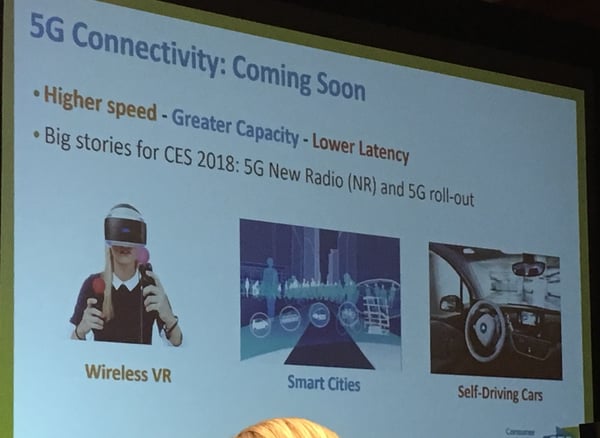
That benefit is two-fold. Not only does it enrich a user experience when it comes to something like AR or VR with higher data rates, but it's also practical for safety, which is where the latency piece comes in. As Koenig explains, one of the key pieces of autonomous driving technology safety is the ability for it to independently make operational decisions -- quickly, and perhaps more seamlessly than a human driver could.
But just how fast is 5G? During the presentation, the example of a two-hour movie download was used. On a 3G network, for example, that would take 26 hours. On 4G, it would be lowered to six minutes. But on 5G, it's lowered to 3.6 seconds.
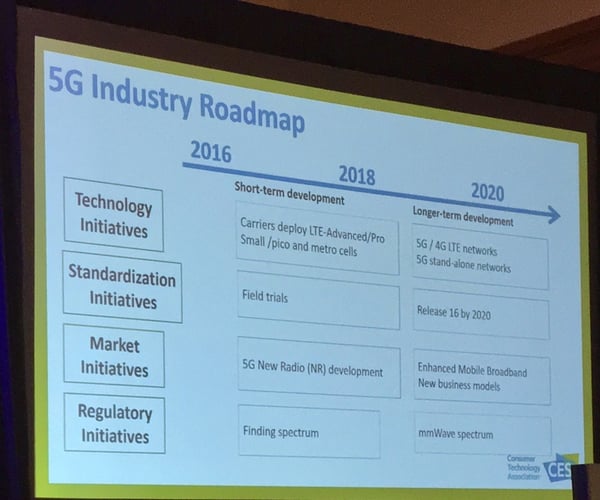
2. Artificial Intelligence
We've talked a lot about this one, and it came up in some of the major press events of 2017.
A considerable amount of attention will be paid, it seems to the role of AI in digital personal assistants.This plays into the smart home sector, with AI technology like deep and machine learning lending itself to the ability to recognize user preferences and behavioral patterns.
Smart speakers, for example, were named as some of the heaviest hitters in the CTA's Consumer Tech Industry Forecast, with a predicted revenue of $3.8 billion (an increase of 93%), and 43.6 million units sold (+60%).
It also plays a major part in autonomous driving capabilities, especially when it comes to sensory perception (like objects in the vehicle's path), data processing, and action. That, too, was a key piece in the industry forecast, with $15.9 billion revenue predicted -- a 6% growth.
What's next? The two key things to come identified were conversations with context -- like machines carrying on conversations with humans with better natural language processing, to make it more like the way we speak to each other -- and the ability to build trust and reducing bias. The latter comes into play, for example, to help AI systems better explain why it makes certain recommendations to its users.
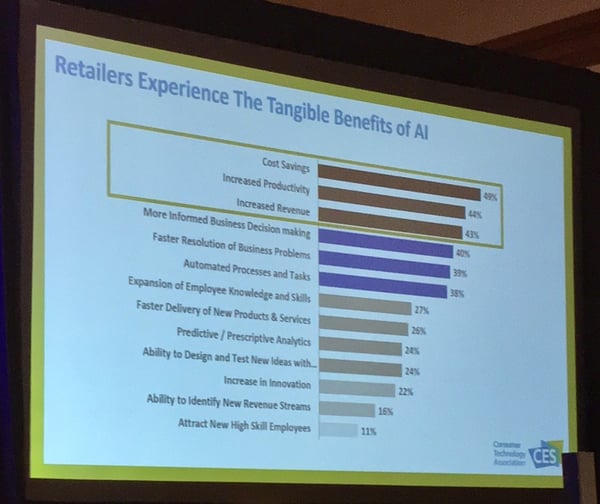
3. Robotics
Robotics, in this context, seemed to play the biggest role in consumer electronics -- which seems fitting, seeing as CES is largely about the newest technology in that sector.
The speakers seemed to take a particular interest in Kuri, a robot that was described as a "family friend" that can "capture life's moments automatically using face recognition." It's a bit nostalgic of the Google Clips photo technology announced last fall, which boasts allowing users to spend more time in the moment, rather than taking the perfect picture, with similar recognition technology.
The event also shed light on Honda's robots, which are engineered around what it calls its "3E Philosophy," built on the pillars of empowerment, experience, and empathy. It reflected a pattern of working to incorporate more empathy into robotics -- like Kuri, these would be moving, speaking computers with feelings.
4. Voice: The Fourth Sales Channel
The CTA's research has shown that one in four shoppers used voice assistants in their holiday shopping during the 2017 season.
Here's an area where marketers can use the rise in smart speaker sales (and the anticipated continued growth to their advantage. Voice assistance and technology is becoming a greater part of a brand's identity -- an area of opportunity for those who have not yet begun to leverage it as such.
So, how can marketers do that? I recommend looking into ways to merge your brand with voice assistants and see how you can create content exclusively for that medium -- for example, something like building a custom, branded skill for Amazon Echo.
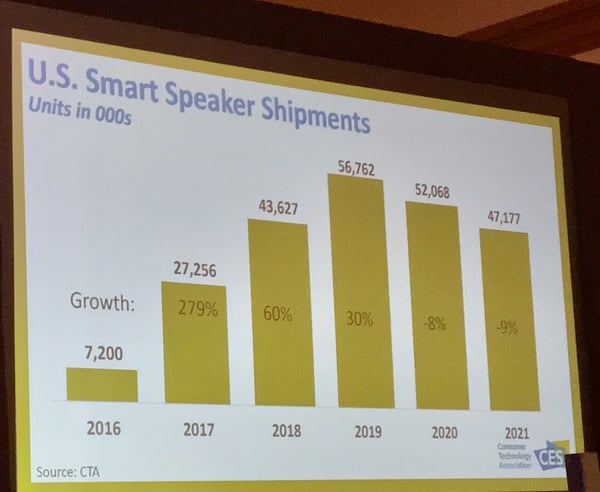
5. Facal Recognition on the Go
From the iPhone X Face ID technology to your car being able to recognize your eyes and nose, our faces are playing a greater role in helping our devices recognize us and capture our preferences -- anytime, anywhere.
And, it seems, we're becoming more comfortable with it. According to the CTA's research, users have a growing amount of trust in this technology being used for such personal data as medical information.
That's reflected in the anticipated uptick in in-vehicle technology -- revenues this year are predicted to reach $15.9 billion, which is a 6% increase.
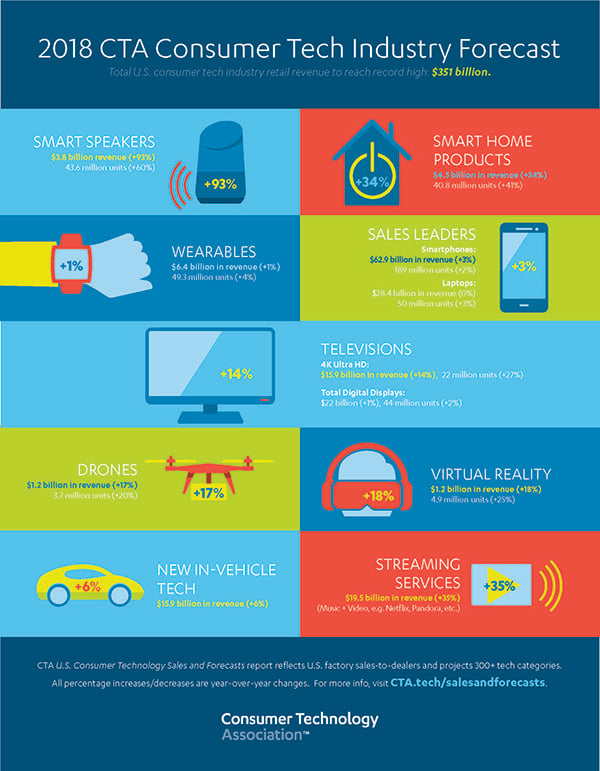
Source: CTA
6. Virtual Reality
VR isn't exactly a new trend, but what we'll be keeping our eyes on is the newest use cases for it. Content, it's predicted, is where the most noticeable change and evolution will take place, especially when it comes to creating immersive experiences for brand awareness.
Where once this technology was almost exclusively used to tell a story for the purpose of entertainment, businesses and organizations are now presented with an opportunity to leverage VR for commercial purposes -- like shopping, for example, or a deeper look inside what helps a business run and create its products or services.
Augmented Reality (AR) is further working its way into the B2C space, as we enter the era of what was called "AR for all." There have been several consumer-oriented use cases from brands like Ikea and Wayfair -- using the technology for things like home decor -- as well as demonstrations on how it enhances a gaming experience from both Apple and Google.
But AR first made a name for itself in the B2B sector -- largely for purposes related to trade shows and enhancing information delivery to analysts. And as it continues to grow its presence within the consumer sector, I don't anticipate it leaving B2B behind. As the technology improves, many of the purposes it was originally used for will also continue to evolve, presenting an opportunity for business-facing marketers.
7. Smart Cities
From self-driving pizza delivery vehicles (seriously -- this is a thing) to environment and energy usage, smart cities are where society and technology intersect.
While Smart Cities is still a new enough concept that its role in marketing remains fairly open-ended, it does present an opportunity for brands looking to increase their roles in the community -- especially where technology is concerned.
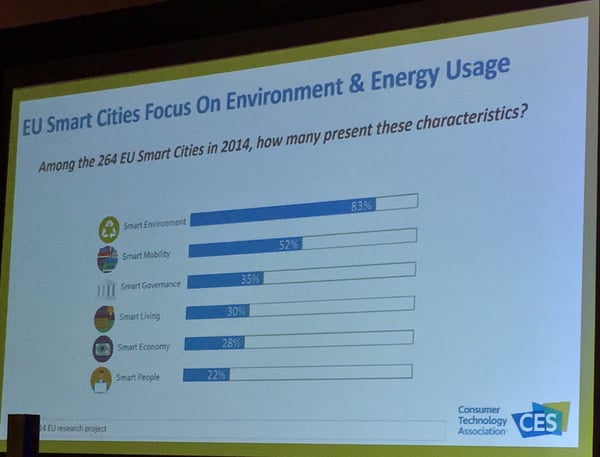
One of the best cases for the growth of Smart Cities, for example, is how it will work to bolster public safety and services -- something that cannot happen without the cooperation of the market, organizations, and regional leadership.
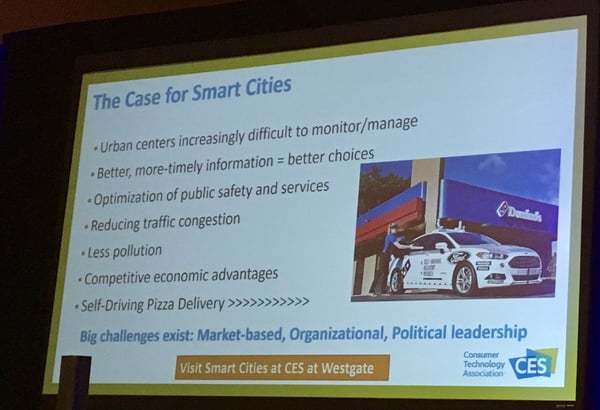
By exploring where their own organizations fit into the ecosystem of a Smart Cities, marketers can work their way ahead of the curve in playing a larger role in what remains an emerging trend.
There you have it -- seven of the top 2018 tech trends, which I anticipate hearing about this most this week. As always, I'm open to your take on these emerging technologies. Feel free to reach out to me with your thoughts and questions on Twitter.
No comments:
Post a Comment